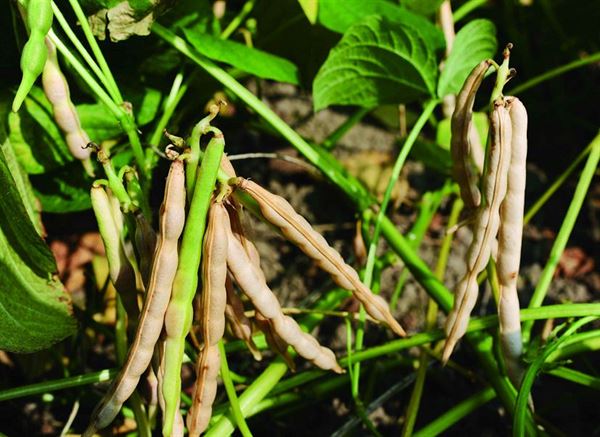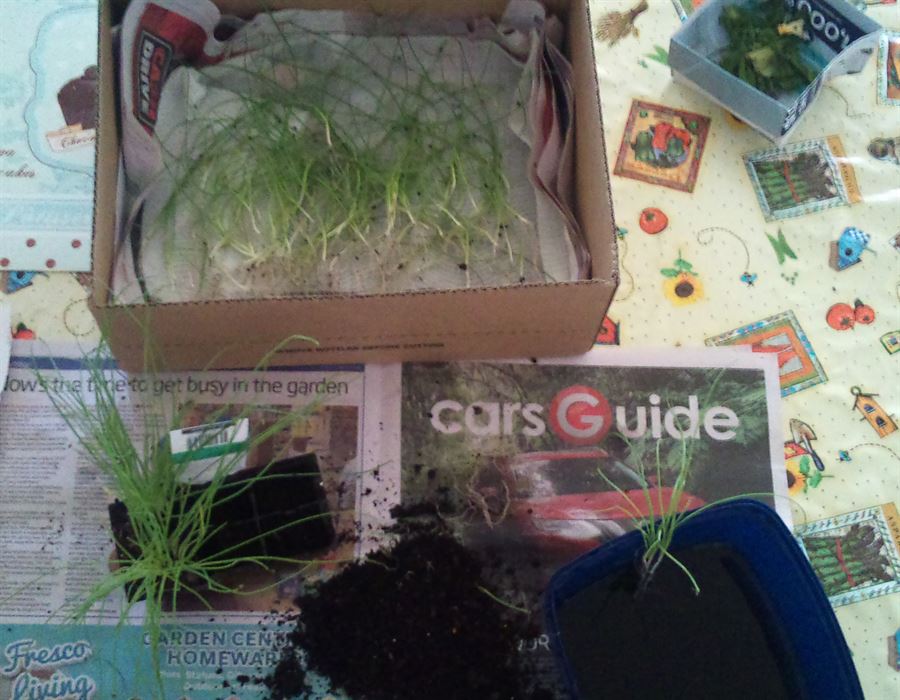
Alternative Thinking, Natural Gardening
Is it better to use seeds or seedlings? If you haven’t planned in advance the decision is easy to make, get some seedlings. But if you have planned your calendar for raising seedlings and planting out, there are still times when it is better and more cost effective to purchase a punnet of seedlings than a packet of seeds.
Onion Seeds or Seedlings?
When it comes to finicky seeds like onions it is worth considering buying a punnet for about three dollars. In the punnet I just purchased there were about twenty five seedlings in each of the six compartments. So approximately one hundred and fifty seedlings.
Compare that with buying a packet of seeds, which will cost you about the same and you will probably get about five hundred to a thousand seeds. No comparison at first glance.
But you are not going to plant a thousand seeds and you will need to keep the seeds until next season and if you can find them you will have seeds that will have a lower germination rate than last year.
Not to mention how awkward it is to plant small seeds at the right depth. And if you mix them with sand so they spread better you will still have to thin them out and in places plant some more seeds or transplant the thinnings.
A much easier way to plant these type of seeds is to buy a punnet and separate them for transplanting.
Separate The Seedlings
It is quite easy to separate the seedlings. Just squeeze the base of a section of the punnet and then pull out all of the seedlings together.
Soak the mass of seedlings in some water and then tease them apart gently.
Some parts of the roots may come off, but this won’t hurt them as long as they still have some roots. They will recover when replanted.
Planting the Seedlings
Planting out is simple. Just push a stick into the soil and make a fairly big opening. If the soil falls in on itself, wet it down thoroughly before starting. Make about a dozen holes at a time and drop your seedlings in.
When you are trying to guide the roots into the hole widening the top of the hole will help. If you have to, just guide the roots down with your finger.
Use the hose to water in each seedling. The sides of the hole will collapse in securing your seedling and making sure that soil is in contact with the roots and there are no air pockets. It will also help push the roots down the hole.
All Finished
So that didn’t take long. About two hours from go to whoa and that included bed preparation and watering it thoroughly before making the holes.
I guess another alternative is seed tape. Which is probably a discussion for another time after I have had a go at making my own seed tape for carrots. I have never had real succes with carrots. I have got some in at the moment that were planted from seed but they are a bit patchy.
Feel free to add a comment or share a novel idea.
All the best Olman

Natural Gardening
To Spray or Not To Spray
Do I spray? That is the constant question running through the mind of the home gardener. On the one hand is the want to grow organic produce without the use of chemicals and fungicides. Deep inside there is an intuitive knowledge that tells the farmer that all the sprays and chemicals that are produced for use in controlling bugs and disease are not doing the gardener any good healthwise and are contributing to the ruination of the earth’s eco-system.
But the pain the gardener goes through when crops are disfigured by insect attack or fungal attack drive him to think about what chemicals he could use to alleviate the problem. It certainly can’t be cured with chemicals, just alleviated, and in the process an addiction to chemicals is created within the gardener.
What’s the difference between this cabbage and the one beside it?
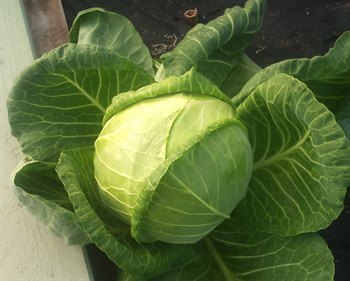
Cabbage behind insect screen

Unprotected Cabbage in the Garden
The only difference between the two cabbages is a screen around the wicking bed that keeps the insects out.

Protected crops are, in my opinion, the most effective way to grow produce and to produce quality crops that look as good as any produce grown with conventional farming methods. The biggest stumbling block for organic farming is the consumers desire to have a perfect looking piece of fruit or vegetable. Nothing else matters.
It is quite enlightening to stand in the fruit and veg section of the supermarket and watch how people pick over their choice of which one to take. Beauty is in the eye of the beholder, but I know if I have the choice between the cabbages, I will pick the cabbage without the blemishes.
So what’s the solution for growing without the use of Chemicals?
 Protected crops are definitely one solution. Not only from insects but also weather. Hail, flooding rain, excessive heat and insects can all be eliminated from the growing equation. Have a look at Cravo houses from Canada.
Protected crops are definitely one solution. Not only from insects but also weather. Hail, flooding rain, excessive heat and insects can all be eliminated from the growing equation. Have a look at Cravo houses from Canada.
These are my favourite style of protection houses as they cater mainly for crops grown in the ground. Their cost per sqm is less than glasshouses or plastic houses. Their houses have been in Australia for over seventeen years.
These houses have an opening roof and sides, which makes it more susceptible to pest pressure. The benefits of the protection still help and with the sides closed, they have found that insect numbers are reduced considerably as the majority stay closer to the ground where they have more chance of finding food and protection rather than being in the open for keen eyed birds and other predators.
 Go and have a look at them on Google Maps. Just put Sundrop Farms Port Augusta into the search bar of Maps and have a look at what comes up. If that’s not enough, go to their website. They’ve used a drone to take some magnificent aerials of their site which includes the glasshouses, their 20ha solar array and capture tower, water collection and site. It is quite mesmerising.
Go and have a look at them on Google Maps. Just put Sundrop Farms Port Augusta into the search bar of Maps and have a look at what comes up. If that’s not enough, go to their website. They’ve used a drone to take some magnificent aerials of their site which includes the glasshouses, their 20ha solar array and capture tower, water collection and site. It is quite mesmerising.
The following is an extract from their website
An everlasting supply of sunshine and sea water to grow food in arid lands
If you are a traditional farmer, you’ll need water and energy to grow your produce. And you’ll need lots of it.
The challenge is that they are finite resources that are becoming ever scarcer. Our solution? Not to use them!
We don’t extract groundwater from the planet at unsustainable rates. We don’t rely on fossil fuels. And we don’t use soil or valuable farmlands.
Instead we’ve developed technologies that integrate solar power, electricity generation, fresh water production and hydroponics. It produces an equivalent quantity of food to that grown using traditional methods, but the quality is significantly better.
 Another modern facility that is 20ha under glass in Guyra, near Armidale in NSW. The glass houses offer weather protection as much as anything and the location ensures a cold winter. A cold winter is a godsend for releiving pest pressue. Insects prefer the warmth.
Another modern facility that is 20ha under glass in Guyra, near Armidale in NSW. The glass houses offer weather protection as much as anything and the location ensures a cold winter. A cold winter is a godsend for releiving pest pressue. Insects prefer the warmth.
There are many more large glass and poly house areas throughout Australia. Originally they were built to extend the growing season and for cold protection. Now they are protecting crops in numerous ways. Combining the capital expenditure with hydroponics means big companies can get a great return on their investment as they don’t have to worry about crop rotation and fallow periods to replenish their soil.
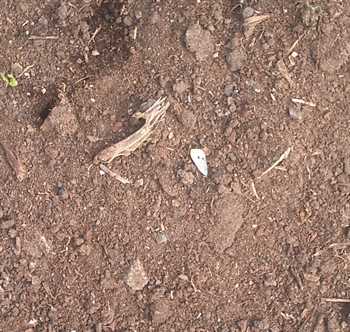 Here in Brisbane, Queensland we don’t get much of a break. I am writing this on the 6th July and the temperature today was over 25 degrees C. I happened to kill a white cabbage moth with a backhand shot using an old squash racket.
Here in Brisbane, Queensland we don’t get much of a break. I am writing this on the 6th July and the temperature today was over 25 degrees C. I happened to kill a white cabbage moth with a backhand shot using an old squash racket.
I’m still waiting for the cold snap that sorts the insects out and gives me a break from them. August and early September should see some cold snaps though.
From what I can see the future for intensive agriculture is going to be in protected houses or in factories. With the advent of low cost LED lighting that can be broadcast in any frequency of the spectrum best suited for photosynthesis we will see old factory areas close to major cities get repurposed as farms.
Hydroponic and aeroponic systems will be the preferred growing method.
Call me old fashioned but I still prefer the system that was developed without our input that we seem hellbent on destroying. Growing in the dirt and looking after the soil food web is still, hands down, the best system for growing vegetables.
This doesn’t mean my opinion won’t change over time. I can see vast increases in the quality and shelf life of hydroponically grown produce. And let’s face it, how are we going to get off planet unless we have a system for feeding ourselves.
That’s right machines don’t need nutrients like humans.
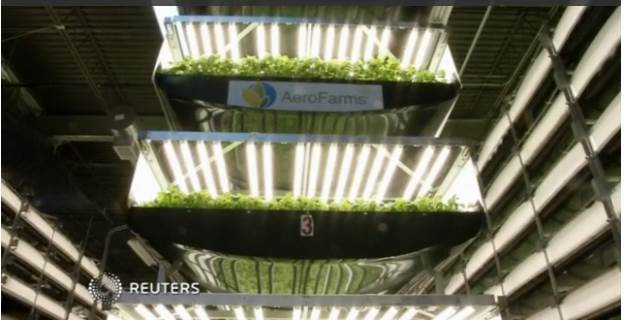
Alternative Thinking, Garden Types

Indoor farming gives former New Jersey arena new lease on life
I prefer to grow food in the dirt without using pesticides, chemicals fungicides and tricks to make a vegetable grow bigger or faster. I still remember what a chicken used to taste like when it took thirteen to sixteen weeks to grow them for consumption, not the six to eight weeks it takes now.
Although the dirt is my preference I am still interested in all ways of producing a harvest. I have learnt quite a bit about aquaponics, hydroponics, aeroponics, bio-dynamics, permaculture, hugulculture and many other systems including vertical farming.
All of them look at different ways to improve the production of food. I must admit that I get a little envious when I see hydroponic vegetables in the supermarket and know that growing hydroponically in a controlled environment makes it much easier to look after your plants and also keep the produce clean. Now days, presentation of your produce as perfect and blemish free is a big drawcard for consumers.
Another Approach
I get The Hustle, a curated daily news email that concentrates on snippets of information for all things business and techy. It’s short, in a quirky style and always has something worth reading. Indoor vertical farming caught my eye and once I read it and watched the video, I thought it may be of interest to readers.
It is a summary of an article from Reuters about Aero Farms and how they are growing food in warehouses. It is hydroponic style with artificial light tuned to the best wavelength for optimum plant growth. The improvement in LED lighting and low operating costs has made it viable economically. Plus they can halve the growing time.
Here’s the catch with indoor farming.
As stated, I prefer growing in the dirt. Although more difficult, I believe that the biological processes involved with growing plants in the dirt and exposed to the rhythms and cycles of sun up, sun down, seasons, daylight and rain imparts a quality and vitality to plants that so far hasn’t been equaled. The plant consumer benefits from the vitality they receive as a gift from the plant.
But there are also benefits from all the research on different methods of cultivation. Primarily it is entrepreneurs trying to gain an edge that will set them apart from the competition giving them a selling advantage. Ultimately though, it will allow us to travel beyond the boundaries of earth.

